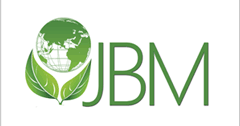Abstract
Ochratoxin A (OTA) is a mycotoxin produced by several fungi of the genera Aspergillus and Penicillium, principally P. verrucosum in temperate climate and A. ochraceous in warm regions. In poultry feed materials, mycotoxins are found most commonly in cereals and to a lesser degree, in meals. The presence of OTA in animal feed contributes significantly to health disorders and decreased production. In addition to aflatoxins, which is an ubiquitously distributed toxin, OTA is one of the reasons for economic losses in the poultry industry due to poor performance and immunosuppression. Moreover, OTA has also been noted for the carryover effect in meat and tissues. This review provides the information regarding the nephrotoxic and hepatotoxic effects of OTA in monogastric animals. Histopathological studies revealed a depletion of lymphoid tissues, granular degeneration in the epithelial and mononuclear proliferation and activation of capillary endothelium cells in the kidney and liver tissue of monogastric animals. Elevated liver enzymes and blood biochemical parameters related to kidney were also observed. For the first time, this article revealed that the reduced Newcastle Disease (ND), Infectious Bursal Disease (IBD) and Hydropericardium Syndrome (HPS) vaccine titers were noticed in broilers intoxicated with OTA. There are various possible ameliorating strategies that exist; however, deactivation of OTA is more convenient as compared to adsorption techniques. In brief, to overcome the implications of toxins on animal health, there is a need of good management practices to reduce the contamination in cereals, the usage of advanced analytical techniques and establishment of guidelines for OTA in animal feed and products.
DOI
https://doi.org/10.35691/JBM.6102.0041
Recommended Citation
Hanif, N. Q.
(2016).
Ochratoxicosis in Monograstric Animals - A review,
Journal of Bioresource Management, 3
(1).
DOI: https://doi.org/10.35691/JBM.6102.0041





